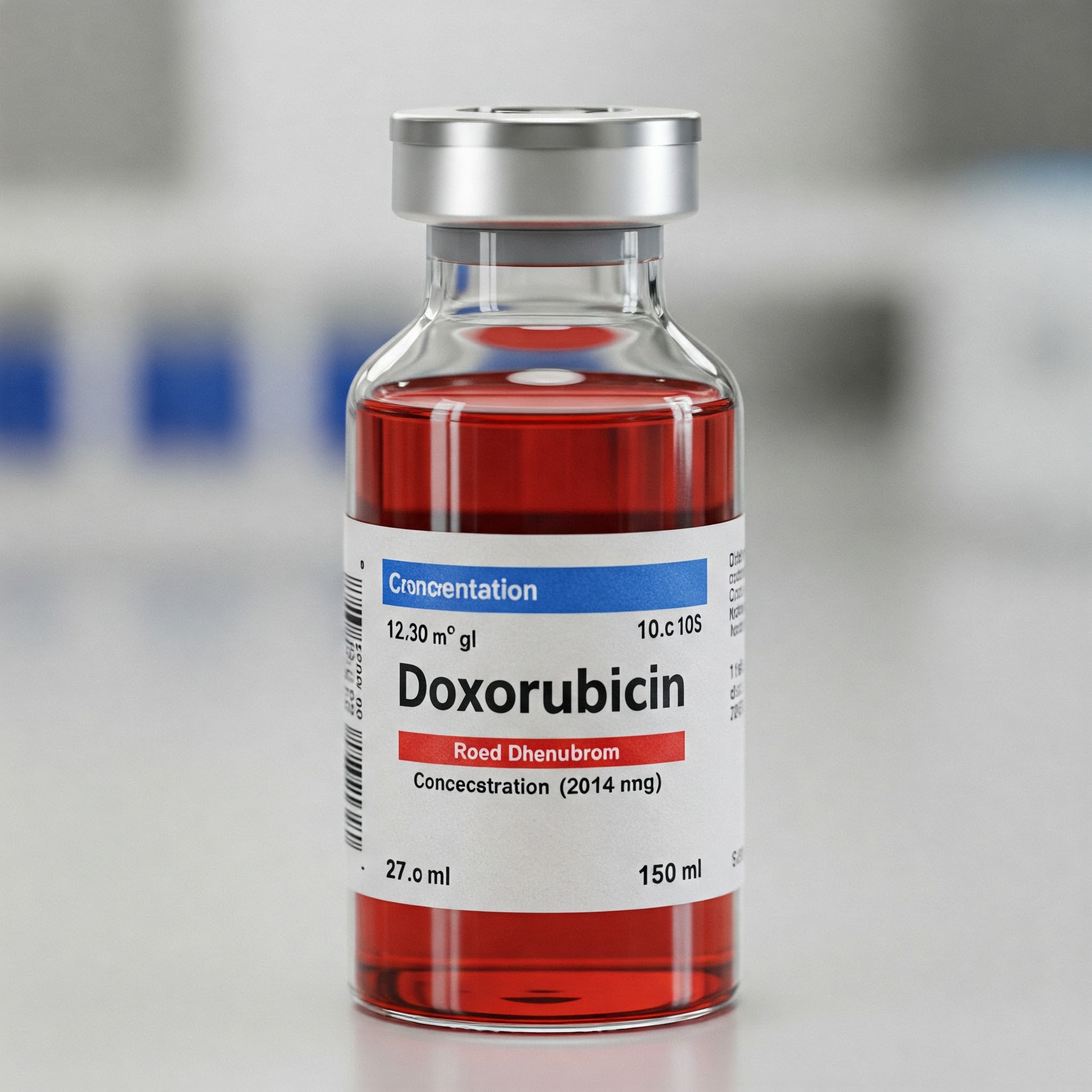
Learn about “The Red Devil” (doxorubicin), one of the strongest chemo drugs—how it works, its severe side effects (heart damage, hair loss), and safer alternatives.
Overview
The chemotherapy (“chemo”) drug “The Red Devil” is doxorubicin (Adriamycin). It is an intravenous cancer medicine with a clear, bright red color, which is how it got its nickname.
Doxorubicin may also cause your urine or other body fluids to turn reddish for 1 to 2 days after a given dose, which is normal and temporary.
Doxorubicin can cause harsh side effects such as heart toxicity (heart failure), severe nausea and vomiting, and total hair loss (alopecia).
The brand name, Adriamycin has been discontinued in the U.S., but the generic doxorubicin is still on the market.


Introduction
In the world of cancer treatment, few drugs are as feared—or as effective as “The Red Devil.” This nickname belongs to doxorubicin, a bright red chemotherapy drug known for its powerful cancer-fighting abilities and harsh side effects [1].
Used for decades against breast cancer, leukemia, lymphoma, and more, this drug saves lives but demands respect [2]. If you or a loved one is facing treatment with The Red Devil, this guide will help you understand:
✔ What it is and why it’s called “The Red Devil”
✔ How it works to kill cancer cells
✔ Serious side effects (heart damage, hair loss, nausea)
✔ Who should avoid it
✔ Safer alternatives like Doxil
1. What Is The Red Devil (Doxorubicin)?
Doxorubicin (formerly sold under the brand name Adriamycin) is a chemotherapy drug in the anthracycline class [3]. It’s used to treat:
- Breast cancer
- Ovarian cancer
- Leukemia & lymphoma
- Bone and soft tissue sarcomas [4]
Why Is It Called “The Red Devil”?
- Bright red color – The liquid is a striking, intense red [5].
- Red urine & bodily fluids – For 1–2 days after treatment, urine may turn pink or red (harmless but alarming) [6].
- Brutal side effects – including heart damage, extreme nausea, and total hair loss [7].
Note: The brand-name Adriamycin is no longer available in the U.S., but generic doxorubicin is still widely used [8].
2. How Does The Red Devil Work?
Doxorubicin attacks cancer cells in two main ways [9]:
- Blocks DNA & RNA production – Stops cancer cells from multiplying.
- Damages DNA – Causes cancer cells to self-destruct.
How It’s Given
- Intravenous (IV) infusion – Usually every 3–4 weeks in cycles [10].
- Lifetime dose limit – Doctors monitor closely because too much can cause permanent heart damage [11].

3. The Red Devil’s Harsh Side Effects
While effective, this drug comes with serious side effects [12]:
Most Common Side Effects
The 3 most common side effects with doxorubicin are hair loss (alopecia), nausea, and vomiting. Hair loss was seen in up to 92% of patients, and nausea and vomiting occurred in over 70% of patients. Your doctor will help control your nausea and vomiting with anti-nausea medicine before you receive doxorubicin.
- Total hair loss (alopecia) – Affects up to 92% of patients [13].
- Severe nausea & vomiting – Occurs in over 70% of cases (anti-nausea meds help) [14].
- Extreme fatigue – Can last for weeks [15].
Most Dangerous Side Effect: Heart Damage
- Cardiotoxicity (heart damage) – The biggest risk; can lead to heart failure [16].
- Lifetime dose limit – Doctors track total dosage to reduce risk [17].
Other Serious Side Effects ( fiverr)
✔ Low blood cell counts → Higher infection risk [18]
✔ Mouth sores & appetite loss → Difficulty eating [19]
✔ Reddish urine (temporary but alarming) [20]
🚨 Emergency Warning Signs:
- Shortness of breath [21]
- Swollen ankles/feet [22]
- Fast or irregular heartbeat [23]
→ Contact your doctor IMMEDIATELY if these occur.
conclusion
This is not all the information you need to know about doxorubicin or doxorubicin liposomal for safe and effective use and does not take the place of your doctor’s directions. Review the full product information and discuss any questions you have with your doctor or other health care provider. read more from here
References
[1] National Cancer Institute. (2022). Doxorubicin. Retrieved from https://www.cancer.gov
[2] American Cancer Society. (2023). Chemotherapy Drugs. Retrieved from https://www.cancer.org
[3] FDA. (2021). Doxorubicin Label. Retrieved from https://www.accessdata.fda.gov
[4] Mayo Clinic. (2023). Doxorubicin Uses. Retrieved from https://www.mayoclinic.org
[5] Oncology Nursing Society. (2022). Handling Hazardous Drugs.
[6] Cancer Research UK. (2023). Doxorubicin Side Effects.
[7] National Comprehensive Cancer Network. (2023). Anthracycline Guidelines.
[8] Drugs.com. (2023). Adriamycin Discontinuation.
[9] Nature Reviews Cancer. (2020). Mechanism of Anthracyclines.
[10] ASCO. (2023). Chemotherapy Administration.
[11] European Heart Journal. (2021). Cardiotoxicity Monitoring.
[12] NIH. (2023). Doxorubicin Side Effects.
[13] Journal of Clinical Oncology. (2022). Alopecia Rates.
[14] Supportive Care in Cancer. (2021). Nausea Management.
[15] Cancer.Net. (2023). Fatigue Management.
[16] Circulation. (2020). Anthracycline Heart Damage.
[17] Journal of Oncology Practice. (2023). Dose Limitations.
[18] Blood Cancer Journal. (2022). Hematologic Toxicity.
[19] Oral Oncology. (2021). Mucositis Prevention.
[20] Clinical Pharmacology. (2023). Urine Discoloration.
[21] European Journal of Heart Failure. (2022). Cardiac Monitoring.
[22] Cardio-Oncology. (2023). Edema Management.
[23] JACC. (2021). Arrhythmia Risks.






